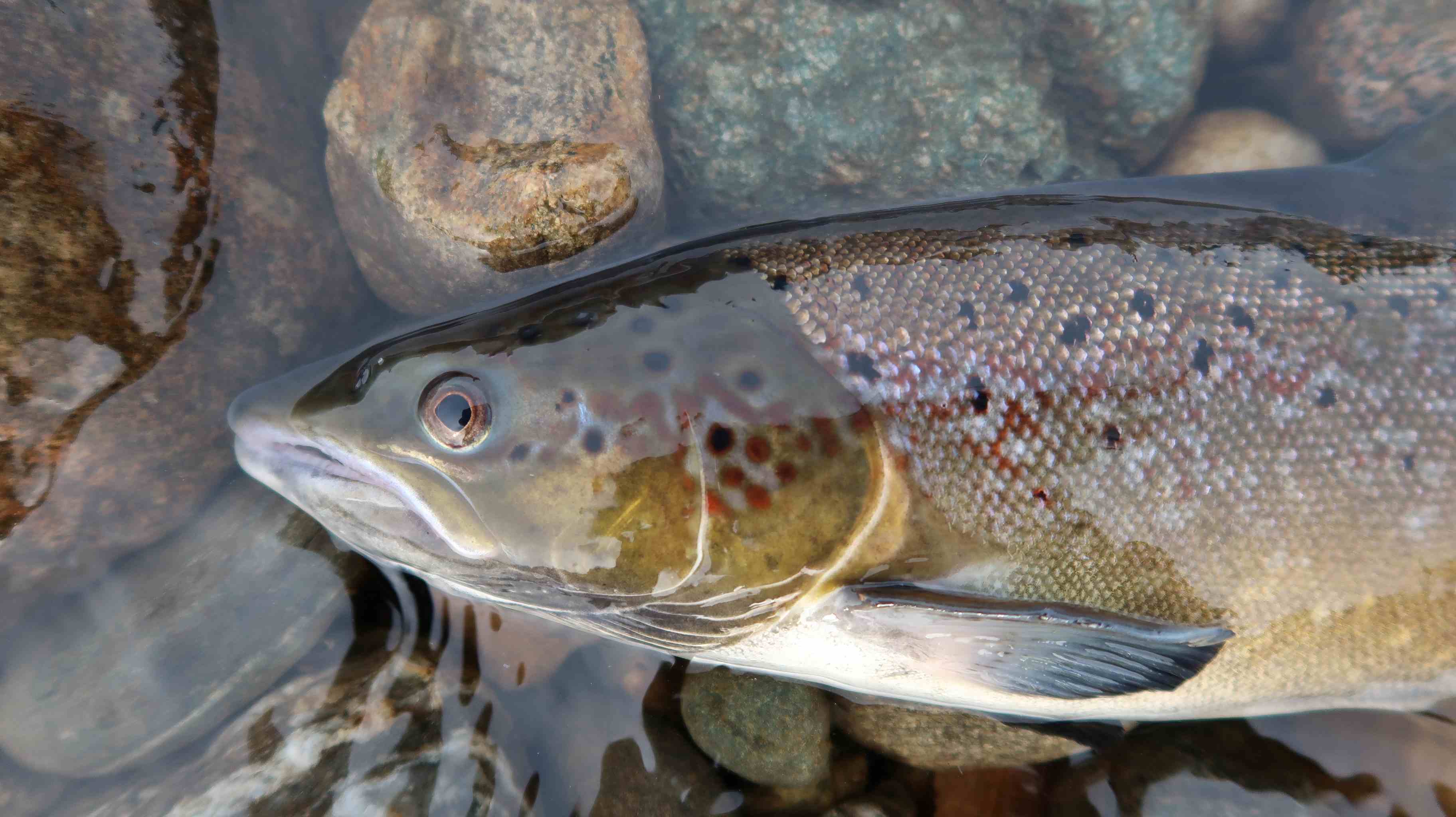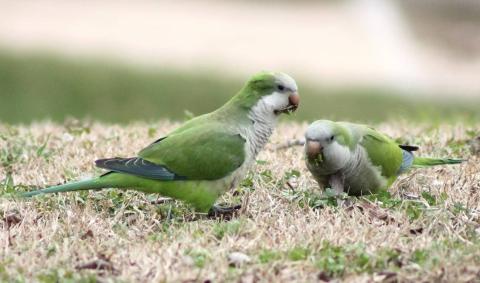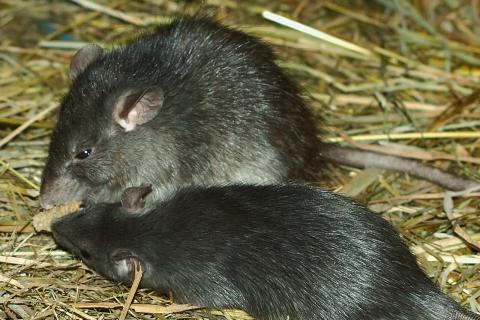A quarter of freshwater wildlife is threatened with extinction
An assessment of the extinction risk of freshwater fauna, covering more than 23,000 species, reveals that around 24% of the species studied are at risk of extinction. The analysis, published in Nature, identifies the main threats from pollution, dams, agriculture and invasive species. Decapods - such as freshwater crabs and shrimps - have the highest percentage of threatened species (30 %), followed by freshwater fish (26 %) and odonates - such as dragonflies (16 %).

Miguel Clavero - especies aguas dulces EN
The study puts global numbers on the poor conservation status of the fauna (and, by extension, the biota) of inland aquatic environments (rivers, lakes and wetlands), a scenario already intuited from other approaches (e.g. living planet index). The work focuses on decapods (crabs and crayfish), fish and odonates (dragonflies and damselflies), to show that almost 25% of the species are threatened with extinction (i.e. fall into one of the threat categories - CR, EN or VU -, are extinct in the wild - EW - or definitely extinct - EX). This number could be higher if other groups with many threatened species, such as bivalves and other freshwater molluscs, had been included. On the other hand, it is striking that odonates are included among the aquatic organisms and amphibians among the terrestrial tetrapods. Both groups depend on water for breeding and juvenile stages, but as adults they are primarily terrestrial (in fact, odonates are, as a group, notably more terrestrial than amphibians).
The overall percentage of threatened species in aquatic environments (25%) is not evenly distributed around the world, and there are biomes and regions where the numbers are significantly higher. This is the case of the world's Mediterranean climate ecosystems (in North and South America, southern Africa, Australia and the Mediterranean basin itself), where many of the native species are threatened by the combined impacts of river regulation (with reservoirs), overexploitation of water resources, invasive species and the elimination of wetlands. The article includes a map (figure 3) showing the number of threatened aquatic species, in which the Iberian Peninsula stands out. Being a relatively poor territory in terms of the total number of species, it is striking, and very worrying, that it is home to so many threatened species.
Nor are the threats distributed homogeneously across the planet. Thus, the article mentions (citing previous work) that 37% of rivers over 1,000 kilometres in length are regulated by reservoirs (‘are no longer free-flowing’). In the Iberian context, this percentage is 100 % (and should even approach 100 % if we are talking about rivers over 100 kilometres long). Moreover, all large or medium-sized Iberian basins host at least as many invasive fish species as native ones (often many more), and are in fact among the most intensively invaded aquatic systems worldwide. Furthermore, the creation of reservoirs and the changes in flow regimes brought about by reservoir management are also conducive to the presence of invasive species. In other words, many of the threats to aquatic biodiversity act synergistically.
I think the article is important to highlight the many conservation needs of aquatic biodiversity, which often receive too little attention. Situations that occur in the management of aquatic fauna are unthinkable with birds or mammals. For example, the European eel (Anguilla anguilla) continues to be commercially exploited throughout its range, including Spain, despite being a Critically Endangered (CR) species, an inconceivable scenario for the European mink (Mustela lutreola), the Iberian desman (Galemys pyrenaicus) or the Dupont's lark (Chersophilus duponti).
In the Iberian Peninsula, protected areas have been created without taking aquatic biodiversity into account. In fact, if these areas had been created at random, by placing them anywhere, they would have protected aquatic biodiversity better than in their current configuration. State conservation strategies have systematically forgotten aquatic species, including the eel or salmon (Salmo salar), but also, and above all, species exclusive to the peninsula with a high risk of disappearing, such as the cyprinodontids (samaruc - Valencia hispanica, fartet - Apricaphanius iberus and salinete - Apricaphanius baeticus), the jarabugo (Anaecypris hispanica) or different species of the genera Squalius and Cobitis. Given this bleak outlook for native biodiversity, it is most surprising that a state strategy for the conservation of the Italian crayfish (Austropotamobius fulcisianus), a species introduced into Spain, has been drawn up.
In summary, inland aquatic systems and their biota are in a bad situation globally, and critical at the Iberian level. Their conservation requires important changes both in biodiversity management planning and in the exploitation of natural resources. And, to date, little progress has been made in this direction.
Graciela Gómez - especies agua dulce EN
Graciela Gómez Nicola
Full Professor of the Department of Biodiversity, Ecology and Evolution (Zoology) at the Complutense University of Madrid
This rigorous study provides a true and objective picture of the dismal state of freshwater biodiversity worldwide. The picture could be even more alarming when considering other animal groups not included in the study, such as molluscs, which are also at very high risk of extinction. The accelerated decline of biodiversity in rivers, lakes and wetlands has been observed for decades, but little action has been taken to reverse it.
The results of the study are an urgent call to action for inland water management agencies, as the main threats to biodiversity are pollution, river fragmentation by dams and weirs, and water abstraction for different uses. As the article reflects, it is true that there is still a great deal of ignorance about the distribution and conservation status of freshwater organisms, but this should not be an excuse for inaction. Science is making great progress in this area, but more financial and human resources are needed to reach the same level of knowledge as other animal groups more widely recognised by society, such as birds and mammals. It is urgent that society recognises the value of freshwater organisms; only then can the conservation of this unique natural heritage be achieved.
In the study, the Iberian Peninsula appears as one of the areas with the greatest wealth of threatened aquatic species worldwide, undoubtedly due to the high number of endemic fish with restricted distributions that inhabit its river basins, of which approximately 85% are threatened with extinction. In addition to the above combination of threats, freshwater fish also face overfishing, the spread of invasive species and the impacts of climate change.
Ignacio Doadrio - especies agua dulce EN
Ignacio Doadrio
Research Professor in the Department of Biodiversity and Evolutionary Biology at the National Museum of Natural Sciences (MNCN-CSIC)
What would you highlight from the study
"Treating water with an ecological approach that is key to preserving the life of numerous organisms and aquatic ecosystems’. While the role of freshwater in meeting human needs is well known, the availability of which will be increasingly constrained by projected population growth and global warming, its role as a living system that preserves essential ecosystem services by hosting an enormous diversity of life is much less well known. However, as the publication points out, these aquatic ecosystems and the life they support are under enormous threat, more so than terrestrial ecosystems, and a shift in catchment management towards policies that allow water ecosystems to self-sustain, regenerate and conserve the enormous diversity they support is needed".
Which of these species are most important in Spain
"Freshwater fish are undoubtedly the most important species in Spain. Spain is home to a unique ichthyofauna, considered the oldest and most endemic in Europe, with a high number of threatened species included in the International Union for Conservation of Nature (IUCN) Red List. This high degree of threat is due to the geographical isolation of the Pyrenees and the internal processes of basin reorganisation, which have favoured a remarkable diversification of these species over time".
Does the study have any notable limitations?
"Some very important groups, such as freshwater molluscs in the Iberian Peninsula, which harbour great diversity, are missing or poorly represented in the analysis’. The lack of population studies and the consideration of these studies as essential for inclusion in a threat category means that many species appear on the Red Lists as data deficient (DD) when they are probably threatened with extinction. Many regions have insufficient monitoring systems for these species that could be covered by modern and inexpensive techniques such as environmental DNA. Lack of modelling to see the real future impact of global change".
Aina Carbonell - especies agua dulce EN
Aina Carbonell Quetglas
Senior Scientist at the Spanish Institute of Oceanography, IEO-CSIC
The article by Catherine Sayer and colleagues is relevant because it highlights several issues that threaten the conservation of freshwater freshwater ecosystems in the current situation and the need for preventive action.
It is a global, worldwide survey of the probability of extinction of multiple groups of organisms, of species associated with freshwater and forest environments and inland wetlands, from the tropics to polar areas at high latitudes. Conducted through data collection, and large-scale consultation with experts in different taxonomic groups. The study is based on a five-point survey that analyses both the extinction risk for threatened species and the main causes of species extinction. Cross-referencing the answers of the different experts in different groups, the uncertainty of the assessment for the different species groups is evaluated due to the unequal influence of multiple effects and their interactions and the extent and conservation of their habitats.
It is worth noting the link that the article establishes between the threat of biodiversity loss and human activity due to the alteration of environmental conditions or the modification of habitats and their uses. Some 28% of the threats come from invasive species and pathogens. In this sense, in the river environment, the INVESAQUA project for the Iberian Peninsula has established an atlas of the 100 most relevant continental invasive species. Among the taxonomic groups with the most species are algae and fungi, fish, crustaceans and molluscs, making up the most harmful species for the conservation of native flora and fauna. These are species from other oceanic regions that may be transported or aided in their spread by transport in ballast tanks or in the biofouling of ships (over 90% of the transport of goods is transported by sea according to data from the United Nations Conference on Trade and Transport, UNCTAD), or be introduced as a result of the intentional or accidental release of aquarium and aquaculture species, or species transported in the packaging material of trade in live aquaculture organisms for human consumption or recreational fishing. All of them can be hosts to parasitic species and pathogens, which when released into the environment threaten the health of native species and ecosystems. On the other hand, little consideration has so far been given to the danger of extinction of native species under the effects of climate change, limiting their chances of survival and distribution.
Catherine A. Sayer et al.
- Research article
- Peer reviewed
- Animals



